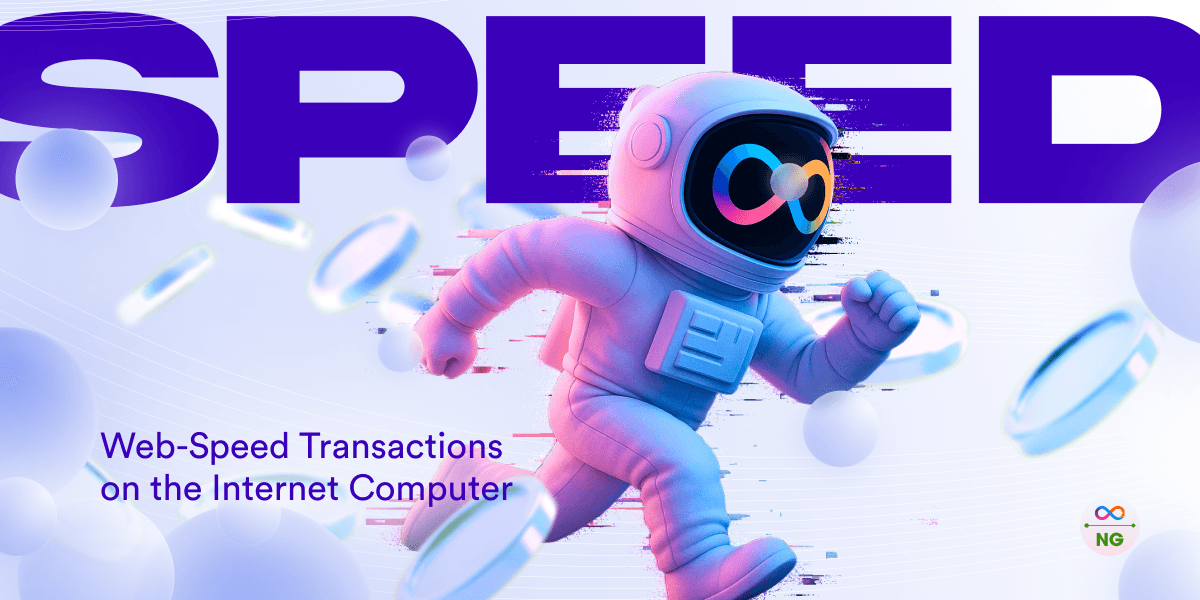Web-Speed on the Blockchain: How the Internet Computer Redefines Real-Time Dapp Performance
May 27, 2025

In the early days of the internet, slow-loading web pages were a familiar frustration. That spinning wheel or never-ending "Loading..." bar often tested our patience. Today, with 5G networks and edge computing, digital users expect more instant responses, seamless interactions, and uninterrupted services.
But while internet infrastructure has evolved, blockchain has struggled to keep up with these expectations. Decentralized applications (dapps) built on many legacy chains still suffer from high latency, limited throughput, and poor user experience, especially under heavy load.
This is where the Internet Computer Protocol (ICP) introduces a major leap forward: web-speed transactions. With performance rivaling centralized cloud platforms, ICP is the only blockchain designed from the ground up to meet the real-time expectations of modern internet users, all while maintaining decentralization, scalability, and security.
Web-Speed: The Internet Computer Advantage
The Internet Computer solves the blockchain trilemma: security, scalability, and decentralization, by introducing a fundamentally different architecture. It offers not just high throughput but a web-like performance layer that supports fast reads, low-latency writes, and instant responses, fully on-chain.
Key Performance Metrics:
- Transaction Finality: ~1 second
- Throughput: Over 11,500 transactions per second
- Query Call Speed: Milliseconds (faster than a DNS lookup)
- Write Call Finalization: 2–5 seconds (and improving)
But “webspeed” is more than TPS and finality. It's about enabling a seamless, familiar user experience — one that hides the complexities of blockchain from the end user.
Two Perspectives: Why Webspeed Matters
1. From the User’s Point of View
Applications built on ICP perform so well that users have no clue they are interacting with a blockchain backend. They don't need wallets, gas fees, or complex verification steps. The responsiveness is on par with web2 applications hosted on AWS, Azure, or Google Cloud.
This is how platforms like OpenChat, DSCVR, and Distrikt deliver real-time interactivity while running entirely on-chain.
2. From the Developer’s Point of View
Developers benefit from two essential types of calls:
- Query Calls (Reads): Executed in under a second without consensus, allowing fast UI updates and real-time data retrieval.
- Update Calls (Writes): Go through consensus but finalize in seconds, enabling transactional integrity while maintaining speed.
This distinction allows developers to architect applications that behave responsively without compromising on blockchain guarantees.
Breaking Barriers: Real-World Use Cases
Thanks to web-speed performance, developers can now build applications previously deemed impractical on-chain:
- Decentralized Social Media: Real-time commenting, liking, and sharing
- Web3 Marketplaces: Instant product listings, bidding, and purchases
- On-Chain Gaming: Smooth multiplayer interactions without centralized servers
- AI-Driven Agents: Seamless inputs and rapid outputs directly on the blockchain
- Live Ticketing & Streaming: Real-time event access and verification
These aren’t hypothetical — they’re already being developed on the Internet Computer.
Removing Friction: The Reverse Gas Model
ICP goes further by addressing another pain point in blockchain usability: transaction fees. Through its reverse gas model, users are never required to hold tokens or pay gas fees to interact with dapps. Instead, developers cover these costs on behalf of users by preloading canisters with cycles (ICP's version of computational fuel).
This model ensures a smooth onboarding process, making dapp adoption as easy as using a web2 app — no wallets, no tokens, no complexity.
Conclusion
Web-speed transactions are not just a feature, they’re a requirement for any decentralized network seeking mass adoption. As users grow more accustomed to seamless digital experiences, only those platforms that match these expectations will thrive.
The Internet Computer Protocol is currently the only blockchain capable of delivering such an experience at scale. By removing latency, eliminating user fees, and maintaining full-chain integrity, it paves the way for a new era of truly usable, scalable, and decentralized applications.
As the next wave of Web3 dapps emerges — from decentralized ride-hailing to collaborative AI agents — it’s clear that performance is no longer optional. And ICP is setting the standard for what’s possible.